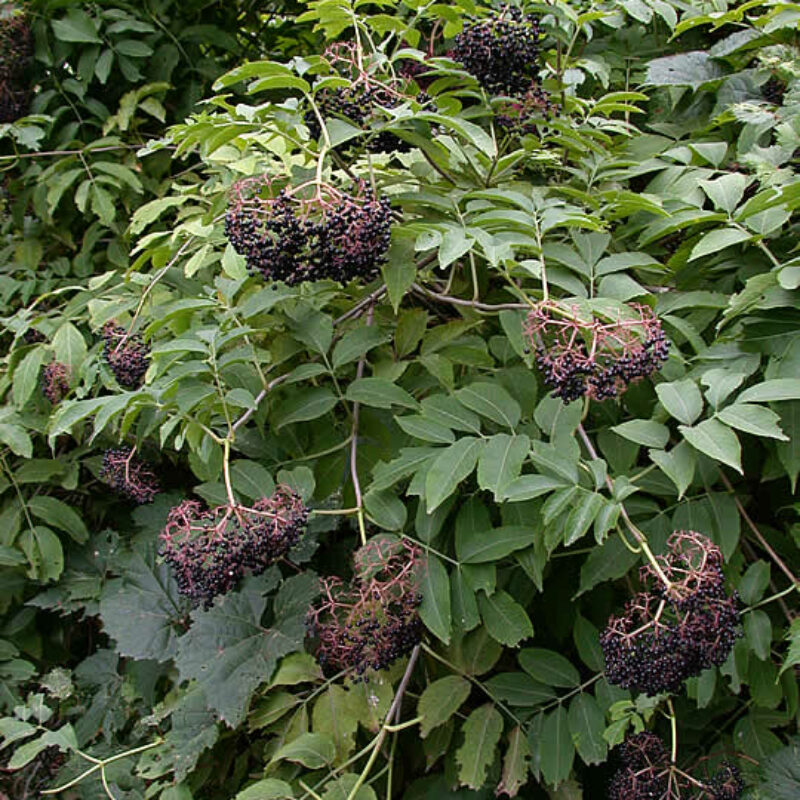Common ElderberrySambucus nigra ssp. canadensis
a.k.a. American Elder, American Black Elderberry
Edible, pollinator/wildlife benefits, prefers moist soil. Deciduous shrub, 3-10' tall with an irregular crown, spreading by rhizomes to form thickets. Valued for its forage, cover, productivity, adaptability and ease of establishment. It is often used as ground cover for stabilizing banks and eroding sites. It may be best used in masses in naturalized areas where it can be allowed to make broad thickets and colonies.
USDA symbol: SANIC4
General Information
| Plant Type | Shrub |
|---|---|
| Height | 5 to 12 feet |
| Light Exposure | Sun, Part Sun |
| Soil Moisture | Medium, Wet |
| Bloom Color | White |

Tolerances
| Flooding / Inundation Tolerance | Moderate |
|---|---|
| General Resilience | 7 |
| Salt Tolerance | Medium |
| Stress Tolerance | Drought Tolerant, Fire Tolerant, General Disturbance |
Pollinator Value: High
| Bloom Months | July to August |
|---|---|
| Larval Host of | Moths |
| Specific Pollinators Hosted | Achatodes zeae, Orgyia antiqua |
| Pollinator Benefit | Insect Pollinated, Provides Nectar, Stem Nesting, Supports Generalists |
Project Planning
| Project Type | Erosion Control, Rain Garden, Restoration, Shoreline Buffer, Upland Buffer |
|---|---|
| Coefficient of Conservatism | 2 |
| Herbivore Sensitivity | High |
| Lifespan | Perennial |
| Rate of Spread | Fast |
| Soil Stabilization | Deep |
| Vegetative Reproduction | Clonal |
Range
| County | Anoka, Becker, Blue Earth, Brown, Carlton, Carver, Cass, Chippewa, Chisago, Clay, Cottonwood, Dakota, Dodge, Faribault, Fillmore, Freeborn, Goodhue, Hennepin, Houston, Isanti, Jackson, Le Sueur, Martin, McLeod, Morrison, Mower, Murray, Nicollet, Nobles, Olmsted, Pennington, Pine, Pipestone, Ramsey, Redwood, Renville, Rice, Rock, Scott, Sherburne, Sibley, St. Louis, Stearns, Steele, Todd, Traverse, Wabasha, Wadena, Waseca, Washington, Watonwan, Winona, Wright |
|---|
